PRUNER SHEARS POISED AND READY
Why Now?
A strong urge this time of year, especially on clear, balmy days, has many gardeners wandering about their gardens with pruning shears in hand, clipping back old leaves and stems in an effort to tidy up the garden for the winter. In some cases, this clipping is good for the plants; in other cases it is not.
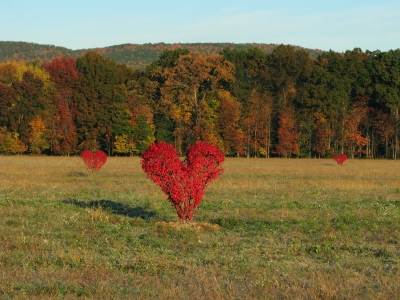
Topiary by Keith Buesig
One rationale for clipping stems and leaves off plants is to reduce certain pest problems next season. I’ll soon be cutting down all the old asparagus stems, usually waiting until they yellow and are anyway no longer “charging” the roots with energy. Cutting them all to ground level and composting the tops reduces the number of beetles present next spring.
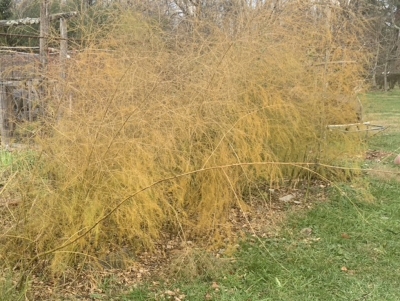
Yellowing asparagus foliage
Similarly, next spring’s inocula of peony botrytis and delphinium leaf spot diseases are reduced by cutting leaves of those plants this fall. Cutting off is not enough, though. I also gather up any diseased leaves from the ground near the plant, carting away the debris to the compost.
Pest activity slows to a halt once the weather turns cold, so there’s no reason to run around the garden, knife or pruning shears in hand, removing diseased stems and leaves as soon as cold weather hits. Anytime before plant growth resumes in spring is effective. But I find it easier to gather up infested stems and leaves now, before time and moisture turn them to mush.
Why Else Now?
Looking around at other gardens, I see that many gardeners cut back their roses this time of year. There are only two good reasons to prune a rose — any tree, shrub or vine for that matter — this time of year. Shortening plant stems diminishes the amount of wind-whipping, and consequent physical damage, stems must suffer from icy blasts in the months ahead.
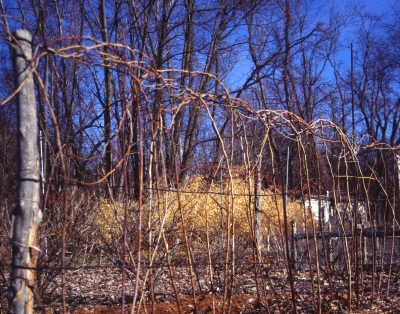
Raspberry stems pruned and protected from wind-whipping
And wherever hybrid tea roses aren’t reliably hardy, the canes need to be shortened enough to be able to bundle them up and protect them for the winter. A five foot tall hybrid tea rose won’t fit inside one of those two foot high styrofoam rose cones unless the rose’s branches are shortened.
I similarly cut back my potted fig trees in autumn as much as is needed to make a compact package that I can wrestle through doorways to my basement.
(More details on pruning types of plants, specific plants, special pruning techniques such as espalier and pollarding, and more can, of course, all be found in my book, The Pruning Book.)
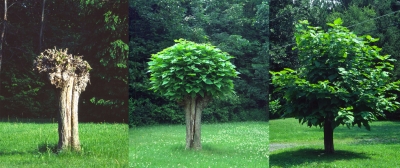
Pollarded catalpa
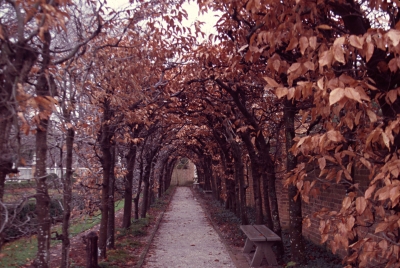
Pleached beeches
Why Not Now?
Aside from abating specific pest problems, preventing wind whipping, and bringing a plant down to manageable size for winter protection, there’s no great benefit to cutting off leaves or stems of any plant this time of year. Most perennial flowers, perennial vegetables like rhubarb and Jerusalem artichoke, trees, vines and bushes can go through the winter as is. After all, who cuts back bee balm, New England aster, dogwood, and witchhazel growing wild in the woods?
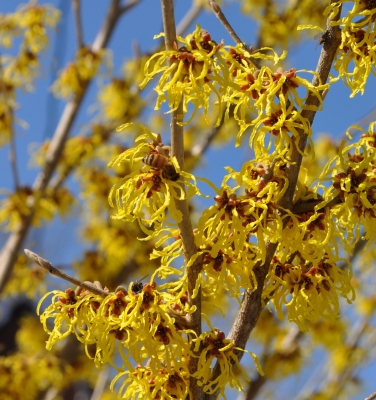
Witchhazel: don’t prune it in fall
Some compelling reasons warrant your keeping your hands off plants until late winter or early spring. Right now, old stems and leaves of purple coneflowers and coreopsis are hiding the soil, in so doing protecting the soil surface from pelting rain. A single raindrop may not seem very forceful, but landing on bare soil, that drop can shatter the soil’s crystalline-like structure, sealing the surface so water and air don’t penetrate. Anything that covers the soil to cushion the blows of raindrops is good for the soil.
Stems left protruding above the soil also catch snow in winter. Snow protects plant roots from winter cold. Snow also brings down some nitrogen from the sky, and this free plant food provides some nourishment to plants the following season.
(Precipitation brings down up to almost one-half pound of nitrogen per thousand square feet per year. That’s actual nitrogen; a 5 pound bag of 10-10-10 fertilizer would likewise have one-half pound of actual nitrogen.)
Discretion Needed
Woody plants are apt to suffer some cold damage near pruning cuts made in the fall. Such cuts heal better if pruning is delayed until just before growth begins in spring.
Waiting until early spring to prune also lets you to selectively cut off branches that died during the winter. Here in Zone 5, a few branches of roses, peaches, and other plants pushed towards their northern limit always show some winter dieback.
Rugged plants like forsythia, rose of Sharon, lilac, and gooseberry will not mind pruning whatever the month.
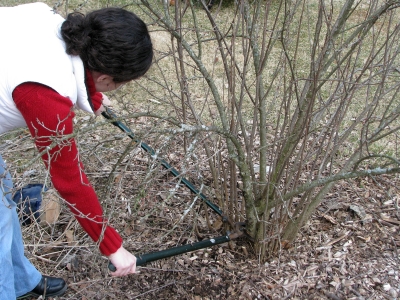
Pruning old currant stems
Before you have at it with your forsythia, lilac, or other spring-flowering shrubs, remember that these plants form their flower buds the season before unfolding their blossoms. Any stem removed now won’t be around next spring to burst into bloom.
Around here this fall, many lilac bushes were fooled by the weather into believing it was spring; they bloomed. Any stems that bloomed around now will not have flower buds to blossom this spring, so pruning them now won’t diminish any blossoms they saved for then.
My caution to delay pruning woody plants until spring doesn’t apply to pruning dead canes off raspberries and blackberries. Their individual canes begin to die right after they finish fruiting in their second year.
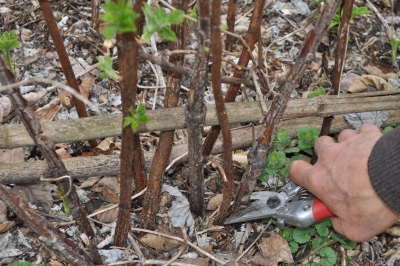
Pruning back 2-year-old raspberry canes
The plants fruit every year because their perennial roots are always sending up new, young canes even as the two-year-old canes are dying.
I cut the dying canes to ground level sometime from after the berries were harvested in summer until before growth resumes in the spring. Why not do it now if it wasn’t done then?
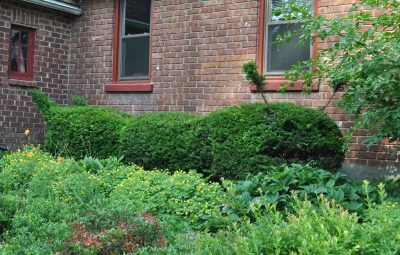
Yew is a tough plant that can be pruned anytime


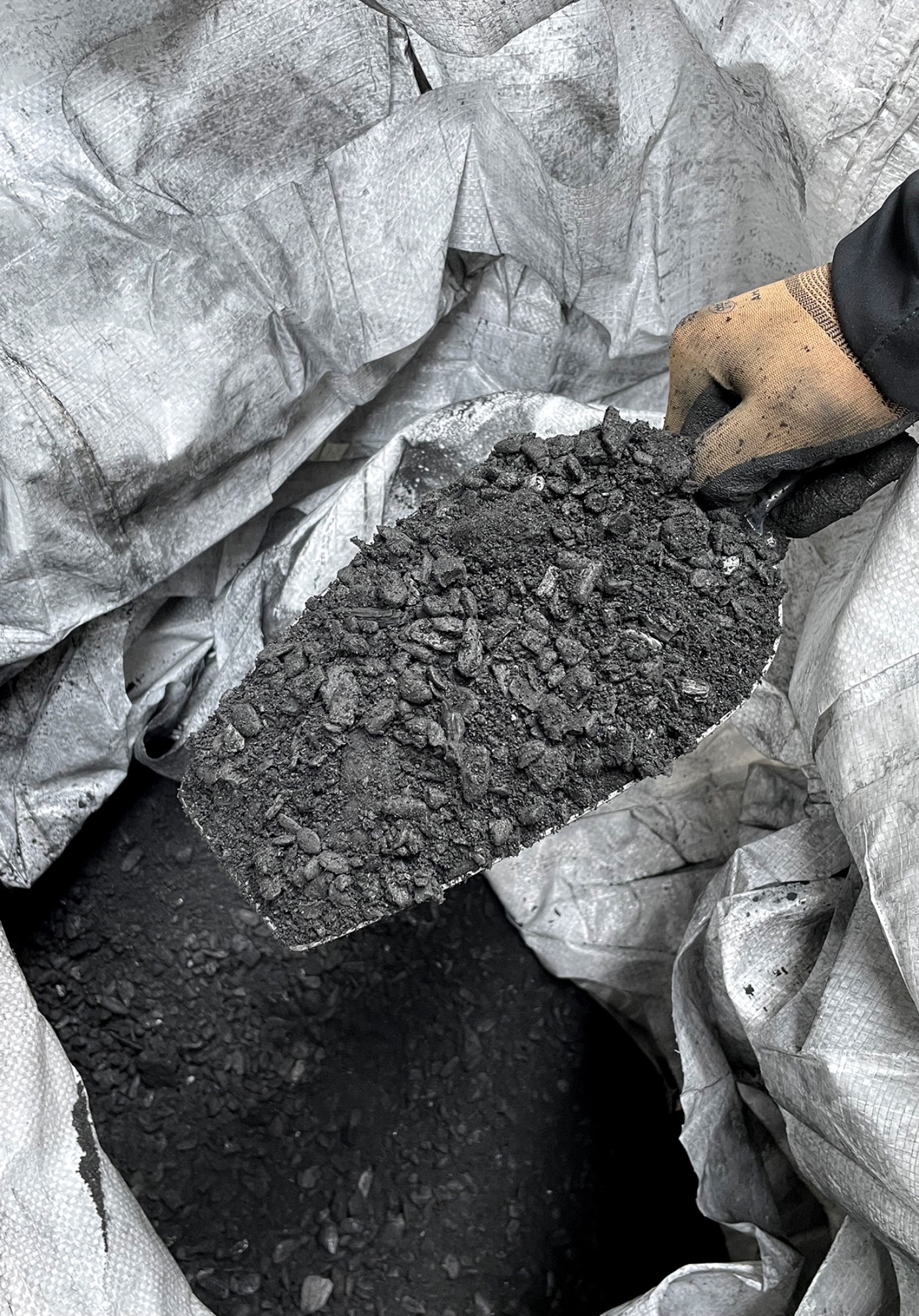
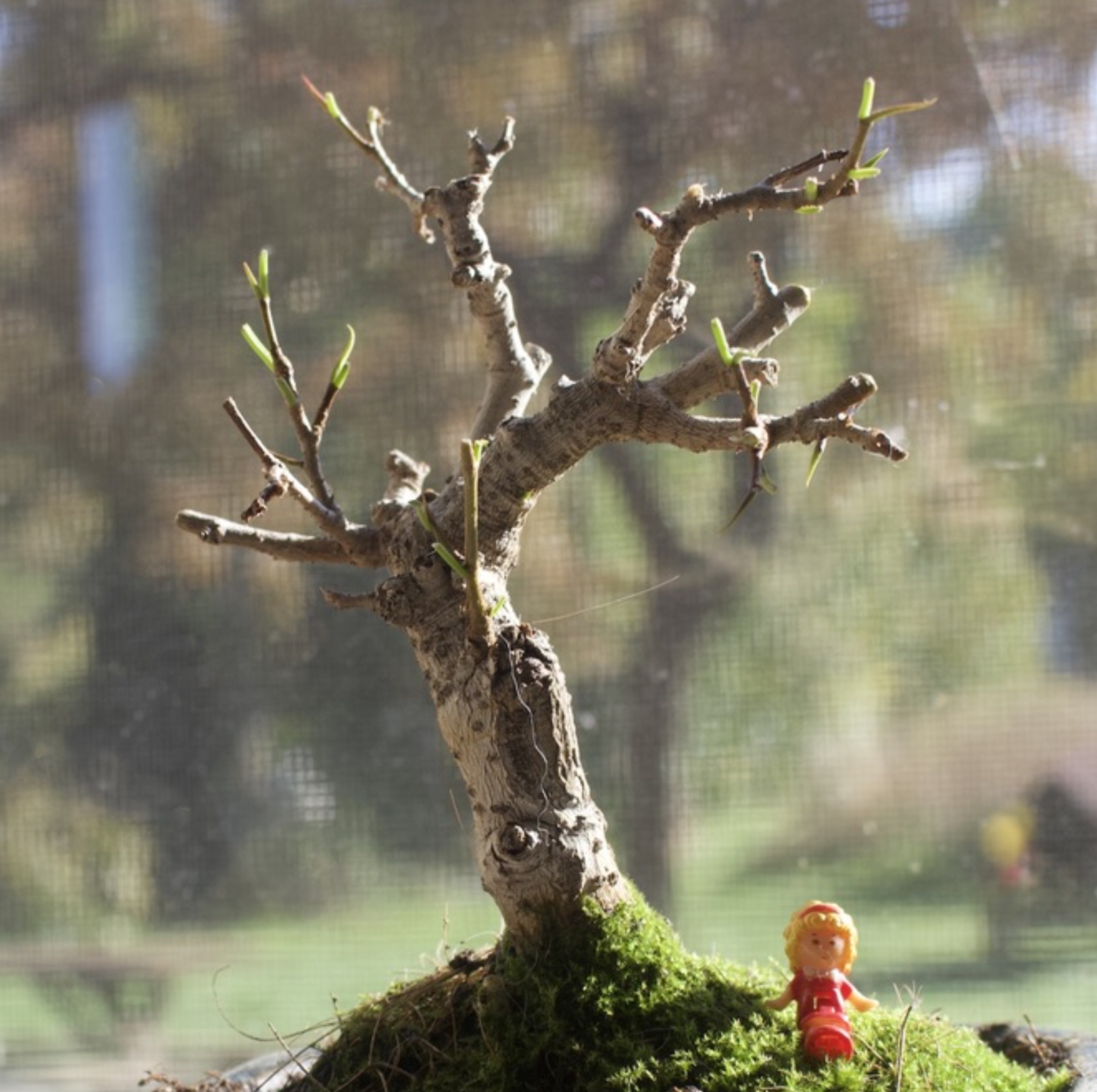
Just curious – what form of nitrogen does participation bring down ? N2 is a gas but I imagine the storm could lightly polarize the molecule and may be it will stay on the ground/in the soil a bit longer ?
Thanks,
Sheila
Plants cannot use N2. Precipitation brings down nitrate in the form of nitrate ion and ammonium ion, either of which forms of nitrogen that plants can use. These are the forms of nitrogen found in chemical (synthetic) nitrogen fertilizers.